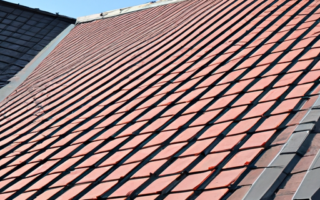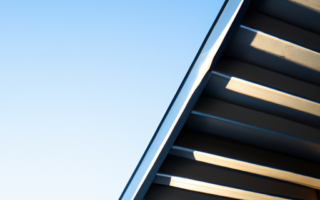Understanding the Basics: Roof Construction 101
Understanding the Basics: Roof Construction 101
When it comes to roof construction, there are several key components and processes that every homeowner should understand. A well-constructed roof is crucial for protecting the structure of a building and its occupants from the elements. In this article, we will delve into the basics of roof construction, providing you with valuable information to help you make informed decisions about your roof.
Roof Structure
The first crucial aspect of roof construction is the roof structure itself. The most common roof structure is a framework of trusses or rafters, which provide support and stability. Trusses are usually pre-made and consist of multiple triangular units. Rafters, on the other hand, are individual beams that form the roof’s framework. The choice between trusses and rafters depends on various factors, including the span of the roof and the desired architectural design.
Roof Covering
The next important component of roof construction is the roof covering. Roof coverings are the materials that protect the roof from weather elements, such as rain, snow, and sunlight. The most commonly used roof coverings include asphalt shingles, metal sheets, clay tiles, and concrete tiles. Each type of roof covering has its own advantages and considerations, such as durability, aesthetic appeal, and cost. It is essential to choose a roof covering that suits your climate, budget, and architectural style.
Roof Insulation
Roof insulation is another vital element of roof construction. Insulation helps regulate the temperature within a building and improves energy efficiency. It prevents heat loss during cold weather and heat gain during hot weather. Common types of roof insulation materials include fiberglass, cellulose, and spray foam. The R-value of insulation indicates its thermal resistance, with higher values indicating better insulation properties. Proper insulation is essential for maintaining a comfortable indoor environment while reducing energy consumption.
Roof Ventilation
Proper roof ventilation is crucial for maintaining a healthy and functional roof. Ventilation allows air to circulate, preventing the buildup of moisture and heat. It helps remove excess humidity, which could lead to mold and mildew growth, as well as preventing ice dams during colder months. Various roof ventilation systems, such as ridge vents, soffit vents, and gable vents, are available to ensure adequate airflow in the attic or roof space. Installing proper ventilation is essential to prolonging the lifespan of your roof and preserving the structural integrity of your home.
Maintenance and Repairs
Lastly, regular maintenance and prompt repairs are necessary to ensure the longevity of your roof. Inspecting the roof for any signs of damage, such as missing shingles, leaks, or sagging, is crucial. Timely repairs can prevent further damage and costly repairs in the future. It is recommended to have a professional inspect your roof regularly and address any issues promptly.
In conclusion, understanding the basics of roof construction is vital for homeowners. Taking into account the roof structure, covering, insulation, ventilation, and maintenance will help you make informed decisions about your roof. By ensuring a well-constructed and well-maintained roof, you can protect your home, enhance its energy efficiency, and enjoy peace of mind for years to come.
Types of Roofing Materials: Which One is Right for You?
When it comes to roof construction, choosing the right roofing material is crucial. The material you select not only affects the appearance of your home but also plays a significant role in protecting it from the elements. With so many options available, it can be challenging to determine which type of roofing material is right for you.
There are several popular types of roofing materials commonly used in roof construction. Each material offers its unique advantages and drawbacks, so it’s essential to consider your budget, climate, and personal preferences before making a decision.
1. Asphalt Shingles:
Asphalt shingles are one of the most commonly used roofing materials due to their affordability and durability. They come in a variety of colors and styles, making them a versatile choice. However, they have a shorter lifespan compared to other materials and may require regular maintenance.
2. Metal Roofing:
Metal roofing has become increasingly popular in recent years due to its longevity and energy efficiency. It can withstand harsh weather conditions, including heavy rain and snow. Metal roofs are available in various types, such as aluminum, steel, and copper, offering different styles and price points.
3. Clay or Concrete Tiles:
Clay or concrete tiles are known for their aesthetic appeal and durability. They provide excellent insulation and can withstand high winds. However, they are heavier than other roofing materials, so your roof’s structure may need reinforcement to support the weight.
4. Wood Shingles or Shakes:
Wood shingles or shakes give a traditional, natural look to your home. They provide good insulation and are eco-friendly. However, they require regular maintenance to prevent rot, mold, and insect infestation.
5. Slate:
Slate roofing offers a timeless and elegant appearance to any home. It is highly durable and can last for more than a century. However, slate is one of the most expensive roofing materials and requires professional installation due to its weight.
When choosing the right roofing material for your home, consider the climate in your area, the architectural style of your home, and your overall budget. Consult with a professional roofing contractor to get expert advice tailored to your specific needs. Remember, investing in a high-quality roof is an investment in the long-term protection and value of your home.
Important Considerations in Roof Design and Installation
When it comes to roof construction, there are several important considerations that need to be taken into account during the design and installation process. These considerations ensure that the roof is structurally sound, aesthetically pleasing, and able to withstand the elements for many years to come.
One of the key aspects to consider in roof design is the slope or pitch of the roof. The slope affects how water, snow, and debris will run off the roof. It is important to choose a slope that allows for efficient drainage and prevents pooling of water, which could lead to leaks and damage. Additionally, the slope of the roof may also impact the overall appearance of the building.
The choice of roofing materials is another critical consideration. There is a wide range of materials available, each with its own unique properties and advantages. Common roofing materials include asphalt shingles, metal, clay tiles, and slate. Factors such as durability, cost, maintenance requirements, and aesthetic appeal should be taken into account when selecting the appropriate material for the roof.
The structural integrity of the roof is of utmost importance. The roof must be able to support the weight of the materials used, as well as any additional loads such as snow accumulation or maintenance personnel. Truss systems or framing must be properly designed and installed to ensure that the roof can withstand these loads without sagging or collapsing.
Ventilation is another crucial consideration in roof design and installation. Proper ventilation helps to regulate temperature and moisture levels within the roof and attic space, preventing condensation and mold growth. It also helps to prolong the life of roofing materials by reducing the risk of overheating and excessive moisture damage.
Lastly, it is essential to comply with local building codes and regulations in roof construction. These codes often dictate aspects such as fire resistance, wind resistance, and energy efficiency requirements. Failure to adhere to these regulations may result in fines and the need for costly modifications after the construction process.
In conclusion, roof design and installation require careful consideration of various factors. The slope of the roof, choice of materials, structural integrity, ventilation, and compliance with building codes are all important considerations that contribute to a successful and long-lasting roof construction project.
Maintaining and Repairing Your Roof: Tips and Tricks
Maintaining and repairing your roof is an essential part of regular home maintenance. A well-maintained roof not only protects your home from the elements but also extends its lifespan. Whether you have a flat roof, a pitched roof, or a metal roof, here are some useful tips and tricks to ensure your roof remains in good condition.
Regular Inspections
Regular roof inspections are crucial to spot any potential issues early on. Hire a professional roofer to inspect your roof at least once a year, especially after severe weather conditions. They can identify minor problems like loose or missing shingles, damaged flashing, or clogged gutters. Addressing these issues promptly can prevent further damage and save you money in the long run.
Clean Gutters
Clogged gutters can cause water to back up and seep into your roof, leading to leaks and water damage. Regularly clean your gutters and downspouts to ensure proper water drainage. Remove leaves, debris, and any other obstructions that might prevent water from flowing freely. Consider installing gutter guards to reduce the accumulation of debris and minimize maintenance.
Trim Overhanging Branches
If you have trees near your home, regularly trim overhanging branches to prevent them from scraping against the roof. Falling branches during strong winds can cause significant damage to your roof. Additionally, branches that constantly touch the roof can provide a pathway for pests, such as squirrels or raccoons, to access your attic. Ensure there is a safe distance between trees and your roof.
Address Leaks Immediately
If you notice a leak or water stains on your ceiling, address it immediately. Ignoring leaks can lead to more extensive damage, including mold growth and structural issues. Locate the source of the leak and temporarily fix it until a professional can assess and repair it properly.
Remove Moss and Algae
Moss and algae growth on your roof not only look unsightly but can also cause damage over time. Use a long-handled brush or a pressure washer to remove moss and algae, taking care not to damage the shingles. You can also apply a moss and algae-resistant solution to inhibit their growth.
Insulate Your Attic
A well-insulated attic helps regulate temperature inside your home and prevents ice dams from forming. Insufficient insulation can lead to heat loss, which can melt snow on the roof and create ice dams. Ice dams can cause water to seep under the shingles, leading to leaks and water damage. Properly insulating your attic can help prevent these issues.
Hire Professional Roofers
When it comes to major repairs or roof replacement, it’s best to hire professional roofers. They have the expertise and experience to handle complex roof construction and repairs safely. Additionally, professional roofers often provide warranties or guarantees on their work, giving you peace of mind.
By following these tips and tricks, you can ensure your roof stays in top condition and protects your home for years to come. Remember, regular maintenance and prompt repairs are key to extending the lifespan of your roof.



